The Transformative Power of Artificial Intelligence: Shaping the Future In the realm of technological advancements, few innovations have captured the world's imagination as much as Artificial Intelligence (AI). From science fiction to reality, AI has become a powerful force driving transformative changes across various industries and sectors. Its significance cannot be overstated, as it has the potential to reshape the way we live, work, and interact with our surroundings. In this blog, we delve into the importance of AI and explore the profound impact it has on our society. 1. Enhancing Efficiency and Productivity: One of the most apparent benefits of AI is its ability to boost efficiency and productivity across industries. By automating repetitive tasks, AI liberates human resources to focus on more complex and creative endeavors. Businesses can streamline processes, optimize resource allocation, and make data-driven decisions faster, resulting in cost savings and increased com...
Robots come in many shapes and sizes. But, perhaps, the most intriguing, endearing, and acceptable are the ones that resemble us, humans.
Humanoid robots are used for research and space exploration, personal assistance and caregiving, education and entertainment, search and rescue, manufacturing and maintenance, public relations, and healthcare.
Before the coronavirus pandemic and the economic uncertainty, Stratistics Market Research Consulting expected that the Global Humanoid Robot Market would reach $13 billion by 2026. While future market behavior is now unclear, robot usage is on the rise: Chinese companies were rushing to deploy robots and automation technology, as doctors were grappling with COVID-19.
For example, a field hospital staffed by robots—the Smart Field Hospital—opened in Wuhan, China, in early March. There, humanoid robots—donated by CloudMinds Technology, a Silicon Valley company—disinfect, measure temperatures, deliver food and medicine, and entertain medical staff and patients.
As the virus spreads to the rest of the world, robots are being deployed in many countries. Some robots can help relieve tired nurses in the hospitals, do basic cleaning and deliveries, others can help in the warehouses, while industrial robots can help maintain some production for manufacturing companies while their human co-workers are quarantined.
Here are 10 other humanoids of 2020.
1. Robotic Avatar
Initially introduced by Toyota in 2017, the T-HR3 is a humanoid robot that mimics the movements of its human operator, like a real-world avatar. Updated for Tokyo Olympics, the T-HR3 has improved controls and can walk more naturally. Envisioned as a mobility service, in the future these humanoids will be able to perform surgeries while their operators, human doctors, will be controlling them from another part of the world. It can also help caregivers to do their work remotely, or those in need of assistance to live a more independent life.
“It is often said that a human shape is useful because the robot can use the same tools and environment as a human, but one more big reason is that humans find it to be easiest to control robots in humanoid form,” explained T-HR3 development team leader Tomohisa Moridaira.
2. Robotic Ambassador
Perhaps the most recognizable face of humanoids is that of Sophia, a social humanoid developed by Hong Kong based Hanson Robotics.
In 2020, the AI-powered four-year-old robot is going to continue her role as a robotic ambassador, helping to advance research into robotics and human-robot interactions.
Taught by humans, Sophia can move, talk, show some emotions, draw, and sing.
3. Delivery Robot
In January, it was announced that Ford became the first customer to incorporate Agility Robotics’ Digit into a factory setting. The headless humanoid has nimble limbs and is packed with sensors. It can navigate the stairs, various obstacles, and all kinds of terrains. It can balance on one foot, but usually it walks upright and is strong enough to pick up and stack boxes weighting up to 40 pounds. It can also fold itself for compact storage.
Ford envisions that Digit will ride in a driverless car and deliver packages to customers, automating the whole delivery process. For now, the company will be testing how humans react when meeting this android.
4. Research Humanoid
Mechanical engineers at the Iranian University of Tehran have been working on Surena robots since 2010. Their latest model, Surena IV, is an adult-size humanoid that is reportedly capable of face and object detection, speech recognition and generation, and can walk with a speed of 0.7 kilometers per hour. It has 43 degrees-of-freedom and its dexterous hands can grip many different shapes. Engineers use Surena to research bipedal locomotion, AI, and to attract students to careers in engineering.
Recommended for You: Meet Your Robotic Coworkers
5. Digital Humanoids
Digital human beings look and act like humans but are entirely virtual. One example is Samsung Technology and Advanced Research (STAR) Labs’ Neons, AI-powered beings with unique personalities and looks. These artificial humans are not designed to answer any questions like Alexa or Siri, but are supposed to show emotions, learn from experiences, and have real conversations. Each Neon is computer-generated and not necessisarly based on real people, and each can be customized for a different role, like a virtual doctor or a yoga instructor.
6. Robotic Bartender
Kime is a food and beverage serving robot, developed by Macco Robotics in Spain. It has a human-like head and torso with two arms inside a kiosk. Tested at gas stations in Europe and in a Spanish brewery, Kime is known to be quite good at pouring beer and can serve up to 300 glasses per hour.
The humanoid features 14 to 20 degrees of freedom, has smart sensors and uses machine learning to improve on its skills.
7. Robotic Actor
Founded by director Will Jackson in 2004, Engineered Arts is a U.K.-based company that produces different entertainment humanoids through collaboration between artists, mechanical and computer engineers, and animators. For instance, their first humanoid—the well-known RoboThespian—is a robotic actor that comes with a library of impressions, greetings, songs, and gestures.
Several of these can be added together to become a robotic theater, an integrated system of robots, movement tracks, animation software, touchscreen control, lighting, sound, and external device control. The company is working on adding RoboThespian the ability to walk on its own, but for now the movement can be staged through a hidden system of tracks and dollies.
You May Also Like: These Aren’t the Droids You’re Looking For
8. Robonauts
Several countries have been working on humanoids for space exploration. In India, Vyommitra, a female humanoid robot, is set to launch on an uncrewed spaceflight in December 2020. The robot is scheduled to conduct microgravity experiments to help prepare for future crewed missions.
Fedor, or Final Experimental Demonstration Object Research, was a Russian remote-controlled humanoid that flew to the International Space Station (ISS) in 2019, where it simulated repairs during a spacewalk, and later returned back to Earth.
NASA’s Johnson Space Center has worked on several humanoids, including Robonaut 2 (that spent seven years aboard the ISS) and Valkyrie. It’s possible that future spacefaring humanoids will be designed to withstand harsh environments of the Moon or the Mars.
9. Educational Robot
SoftBank Robotics’ Pepper was designed to be a friendly emotions-reading helper to work as a receptionist, in retail, and, even, as a nanny. Now, Pepper comes with an educational integrated development environment (IDE), called Tethys, that was created to teach students how to code. Using the software, students can program the humanoid to move, talk, gesticulate, and show different messages on its screen, all in real time. The company hopes this initiative will inspire a future generation of engineers and roboticists.
10. Collaborative Humanoids
Most humanoids are intrinsically human collaborators. For instance, Nextage from Kawada Robotics is a humanoid research platform for industrial cobots for Industry 4.0. Armar from Germany’s Karlsruhe Institute of Technology was developed to perform maintenance tasks alongside human workers in industrial settings.
Walker by UBtech Robotics, on the other hand, is designed to collaborate with humans in their homes. With seven degrees-of-freedom manipulators, the humanoid was developed to perform household tasks and smart home control.
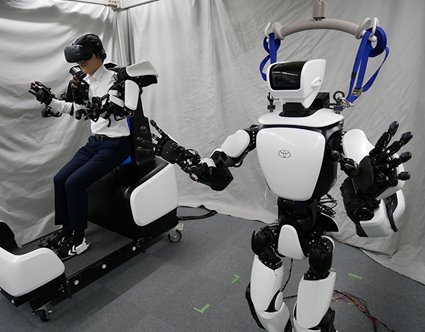
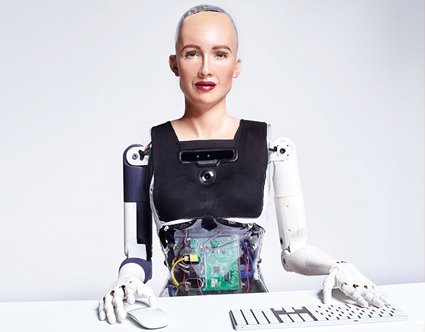
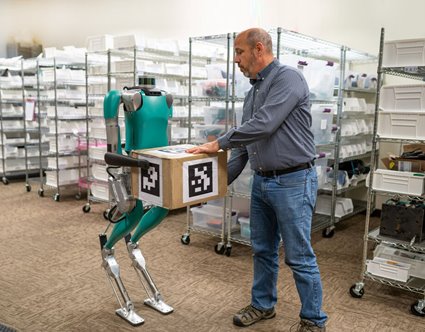
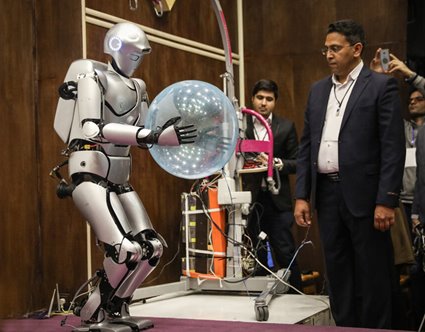
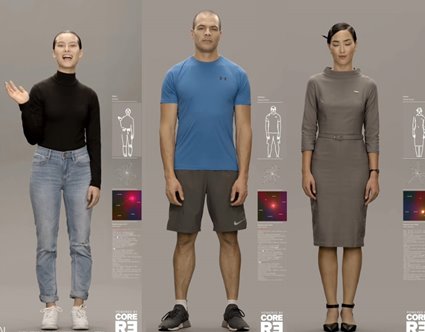
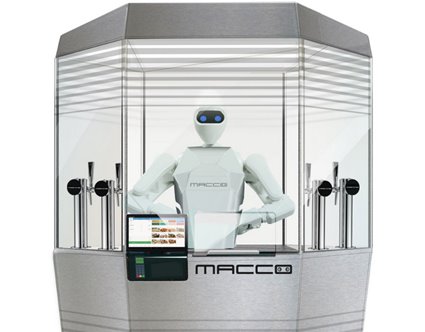
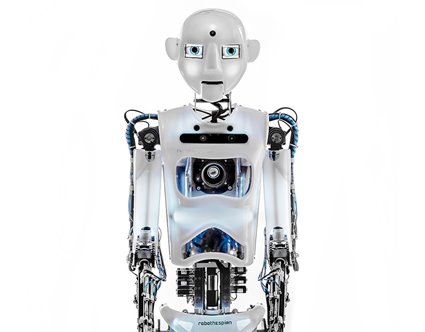
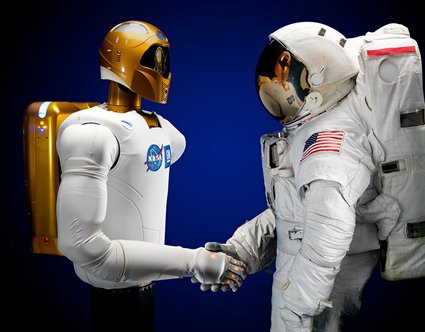
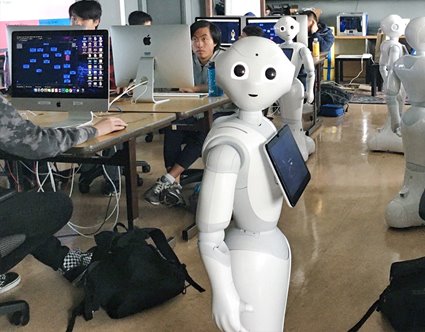
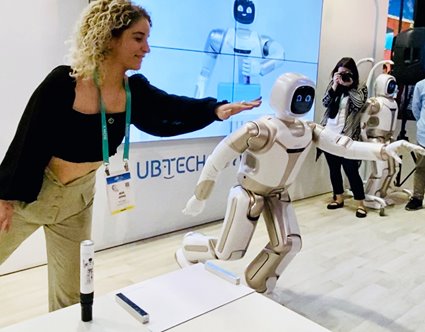
Comments
Post a Comment